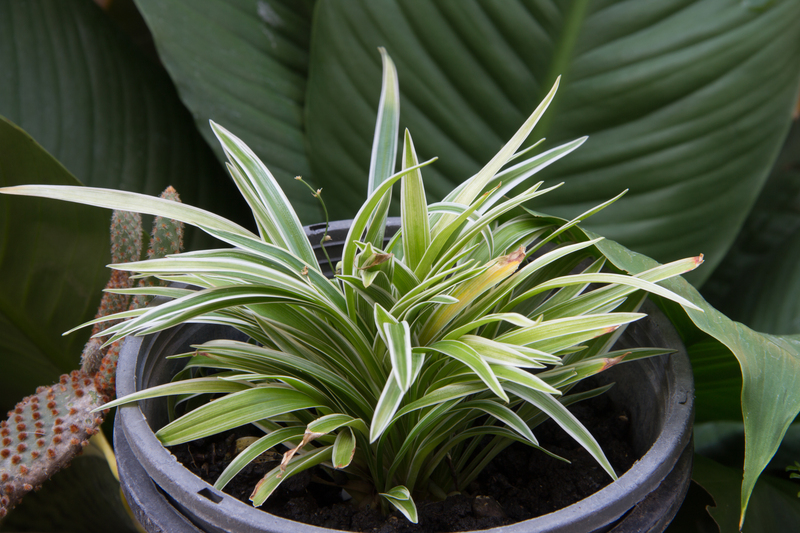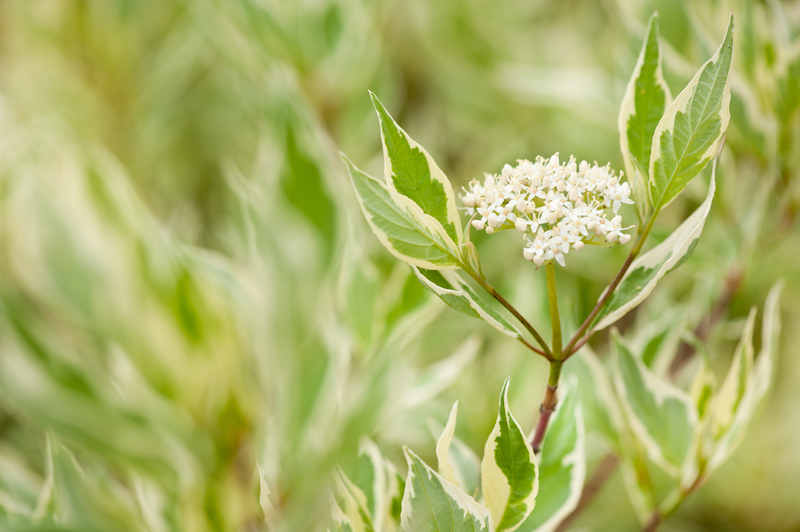Guide to Designing a Wholesome Garden for Children
Posted on 17/08/2025
Guide to Designing a Wholesome Garden for Children
A wholesome garden for children is much more than just a pretty outdoor space. It's a vibrant, living classroom, a safe sanctuary for exploration, and a catalyst for healthy development. Whether you have a sprawling backyard or a modest patch of green, designing a child-friendly garden can nurture curiosity, promote lifelong sustainability habits, and provide countless hours of fun. In this comprehensive guide, discover creative ideas, practical tips, and proven techniques to cultivate a magical, safe, and educational children's garden that the whole family will cherish.
Why Design a Wholesome Garden for Children?
Gardening with children is a transformative experience. It encourages physical activity, sparks curiosity, teaches responsibility, and connects young ones with the natural world. There's mounting research demonstrating that kids who regularly engage with nature become happier, healthier, and more resilient adults. A child-centered garden offers sensory stimulation, opportunities for play, and the chance to discover the magic behind seeds, pollinators, and growth.
Key Benefits of a Child-Oriented Outdoor Space
- Physical Development: Digging, planting, and harvesting improve gross and fine motor skills.
- Mental Health: Nature immersion reduces stress, boosts mood, and enhances focus.
- Educational Value: Hands-on learning in the garden teaches science, math, and ecology concepts.
- Healthy Eating: Growing fruits and vegetables inspires a love for nutritious food.
- Family Bonding: Gardening is an activity that brings families together for shared experiences.

Planning Your Wholesome Children's Garden
Thoughtful planning is the foundation of any successful kid-friendly garden design. Before you start digging, consider these essential elements to ensure your outdoor space meets the needs, interests, and safety requirements of young gardeners.
Site Selection and Safety Considerations
- Choose a Sunny, Visible Spot: Locate your garden where it receives plenty of sunshine and is easy to supervise.
- Avoid Hazards: Steer clear of thorny plants, toxic species, and areas prone to sharp tools or chemicals. Fence in ponds or water features, or include only shallow birdbaths.
- Age-Appropriate Design: Create paths, beds, and features tailored to the age and abilities of your children.
- Allergy Awareness: Check for allergies before choosing plants, and avoid those likely to cause reactions.
Accessibility and Inclusion
Design your wholesome garden for children to be accessible to all, including siblings or friends with differing abilities. Raised beds, wide paths, and sensory features welcome everyone to join the fun. Consider the height of garden beds for wheelchair access or the use of adaptive tools for children with physical limitations.
Garden Zones: Planning Spaces for Play, Learning, and Rest
A truly wholesome garden for kids encompasses more than plants. Divide your garden into zones for different activities:
- Growing Area: Where kids can sow, tend, and harvest fruits, vegetables, and flowers.
- Wildlife Corner: Dedicated zone for pollinator plants, birdhouses, and bug hotels.
- Play Space: Add a sandpit, fairy garden, or natural climbing features.
- Quiet Retreat: A shaded nook with benches or hammocks for reading and reflection.
Choosing the Right Plants for a Child's Garden
The best plants for children's gardens are safe, resilient, easy to grow, and engaging. Plants that invite touch, taste, smell, or sight will excite young senses and maintain their interest season after season.
Essential Categories of Kid-Friendly Plants
- Edible Crops: Cherry tomatoes, strawberries, snap peas, carrots, and radishes all grow quickly and are delicious straight from the garden.
- Bright Annuals: Sunflowers, marigolds, and nasturtiums are vibrant, fast-growing, and attract pollinators.
- Fragrant Herbs: Mint, basil, lavender, and chives are easy for little hands to harvest and enjoy.
- Sensory Plants: Lamb's ear (soft leaves), ornamental grasses (rustling sound), and silver sage (aromatic foliage) stimulate touch and hearing.
- Unusual Varieties: Try purple beans, rainbow Swiss chard, or striped tomatoes to add a "wow" factor to your garden.
What to Avoid
- Poisonous Plants: Avoid foxglove, oleander, monkshood, castor bean, and nightshades.
- Sharp or Spiny Plants: Exclude cacti or roses with thorns in areas for young children.
- Allergenic Species: Be wary of highly allergenic species or those that attract stinging insects to play areas.
Incorporating Wholesome Garden Features for Children
Beyond plants, the magic of a garden for children lies in its interactive features. Integrate elements that invite creativity, movement, and sensory play. Here are some inspiring ideas:
Creative Design Elements
- Stepping Stones & Pathways: Lay out whimsical paths with painted stones, wood slices, or mosaic tiles.
- Tipis or Willow Tunnels: Living structures made from flexible willow or bamboo create shaded "forts."
- Water Play: Install a hand pump, shallow basin, or child-safe fountain for sensory exploration.
- Natural Art Stations: Dedicate a table or stump for leaf rubbings, stick weaving, and nature crafts.
- Miniature Gardens: Create a fairy or dinosaur garden in a planter for imaginative play.
Wildlife-Friendly Additions
- Bug Hotels & Butterfly Houses: Encourage beneficial insects and teach about pollination.
- Bird Feeders & Baths: Attract birds for observation and natural pest control.
- Log Piles & Rock Stacks: Habitat for beetles, toads, and other garden helpers.
Play Structures with a Natural Touch
- Balance Beams: Use logs or planks for coordination practice.
- Stump Seating: Arrange tree stumps into seats for storytelling circles.
- Loose Parts Playground: Supply pine cones, sticks, shells, and pebbles for open-ended construction.
- Mud Kitchen: Let kids "cook" with soil, water, herbs, and old pots for endless pretend play.
Gardening Activities and Educational Opportunities
A wholesome children's garden is a hands-on laboratory for discovery. Build regular activities and learning experiences into your routine to foster curiosity and develop life skills.
Engaging Seasonal Activities
- Seed Starting: Let kids try sowing indoors and tracking seed growth in a garden journal.
- Harvest Celebrations: Mark the ripening of major crops with picnics or family dinners straight from the garden.
- Composting: Teach the basics of composting food scraps and garden waste.
- Scavenger Hunts: Organize nature hunts for bugs, flowers, birds, or different leaf shapes.
Building STEM and Art Skills in the Garden
- Math: Measure plant growth, count seeds, and estimate harvest yields.
- Science: Observe pollination, photosynthesis, weather patterns, and soil health.
- Art: Make pressed-flower art, sun prints, or paint plant labels.
- Literacy: Read garden stories, or label plantings with names and facts.
Ensuring Safety and Security in a Children's Garden
Creating a safe garden for kids is essential for fun and peace of mind. Thoughtful site selection and routine checks can help avoid common dangers.
- Supervision: Even the safest garden needs watchful eyes, especially with young children.
- Tool Storage: Store sharp tools, fertilizers, and chemicals well out of reach.
- Secure Fencing: Fence off the garden if necessary, especially to keep pets and wildlife out.
- Non-Toxic Practices: Avoid chemical pesticides and opt for organic gardening techniques.
Getting Children Involved in Garden Design and Care
Children are more likely to value and care for a garden they helped create. Involve them from the earliest planning stages to the ongoing maintenance:
- Let Them Choose Plants: Give them a say in plant colors, varieties, and garden features.
- Create Their Own Plots: Assign a bed or a few pots as their personal space.
- Design Garden Art Together: Make signs, stepping stones, or wind spinners as a family craft project.
- Share Responsibilities: Assign age-appropriate garden tasks and celebrate their successes.
Maintenance Tips for a Lively, Wholesome Garden
- Water Wisely: Set up rain barrels or watering cans for kids to learn about water conservation.
- Mulch Pathways: Reduce weeding chores and avoid muddy messes with wood chips or straw paths.
- Plan for Year-Round Interest: Mix evergreen shrubs, bulbs, and winter-interest plants for a space that delights in every season.
- Rotate Crops: Try new varieties each year to keep the garden exciting and reduce disease issues.

Sample Wholesome Garden Plan for Children
Here's a sample blueprint for a child-friendly garden on a modest backyard scale:
- Entrance Arch: Grow edible peas or beans on a trellis over the main path.
- Butterfly Patch: Fill with native wildflowers and a puddling station (shallow dish with stones and water).
- Veggie Bed: Raised bed for easy access, filled with favorites like lettuce, carrots, and cherry tomatoes.
- Herb Spiral: Spiral tower of edible and aromatic herbs for touch and smell.
- Stepping-Stone Path: Curved walkway leads to a quiet reading bench under a tree.
- Willow Den: Living playhouse woven from willow canes for climbing and hiding.
- Mud Kitchen: Pots, pans, and child-safe utensils for hours of creative, messy enjoyment.
Conclusion: Growing Wholesome Memories in the Garden
A garden designed for children is an investment in learning, health, and joy. From tactile plants to cozy hideaways, every element should spark curiosity, adventure, and connection. By involving kids in planning and care, you'll grow not just delicious harvests and beautiful flowers--but also lifelong gardeners with a deep and caring bond to nature.
*Let your wholesome children's garden become a place where discovery blooms, imagination soars, and everyday magic grows--from curious seedlings to the laughter of your little ones.*
Start Your Journey: Tips to Begin Today
- Visit local nurseries with your children and let them choose a few favorite plants or flowers.
- Begin with containers or a small patch if space is tight--every yard or balcony can become a mini kids' garden oasis.
- Celebrate every milestone, from the first sprout to the final harvest, and make gardening a cherished family tradition.
- Remember: There's no perfect way to design a wholesome garden for children--follow your family's interests and let your outdoor space evolve together!

